Concrete Madness in Camiguin
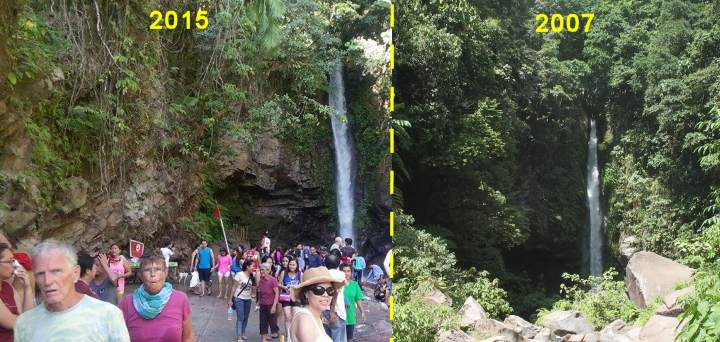
Concrete Madness in Camiguin – For now over two years a big construction activity can be observed in Camiguin. It is to be said that Camiguin has the best maintained roads of all the Visayan and Mindanao islands.
The circumferential road is in an excellent state and is continuously maintained. Currently 2 bridges in Mambajao are replaced by new ones. All around the island, big rainwater trenches are built on the land-side of the road. In some landslide prone areas strong walls are built to protect the road.
But …
When we first visited the Tuasan Falls in 2007, we could drive with our motorbike a bit past Mainit. There we had to leave the motorbike and had to follow two boys who showed us the trail through a huge and almost natural rain-forest. The short trek was wonderful and lasted about 40 minutes.
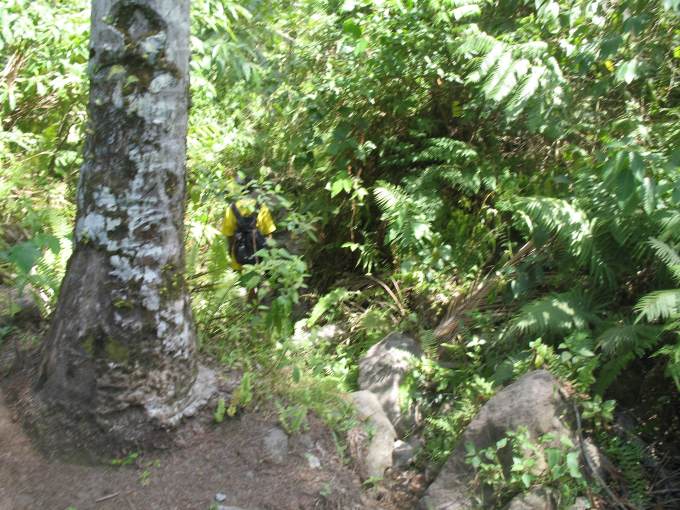
After a bit sweating a wonderful scenery opened before our eyes.
The natural pools filled with refreshing water invited for a dip
And today the same spot looks like this.
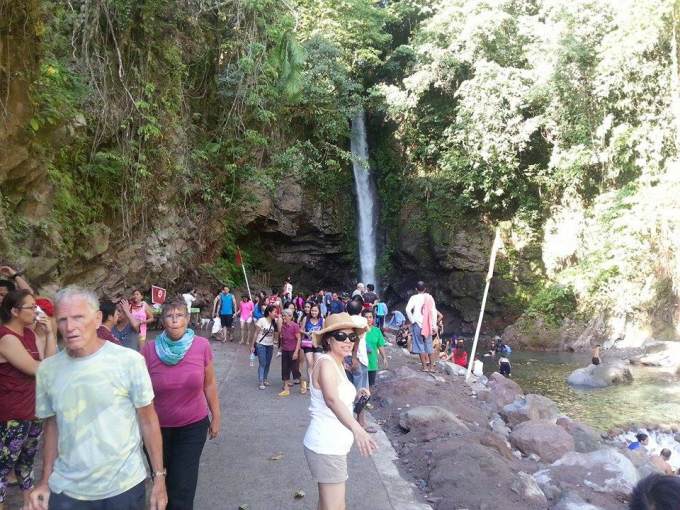 Picture courtesy of Beate Reyes
Picture courtesy of Beate Reyes
The whole forest is destroyed over kilometers and the scenery has lost all its fascination. It is nice that people in a wheel-chair can now visit this beautiful waterfall, but a 4 feet wide concrete track would have been absolutely enough. But no, they constructed a full size Barangay road. This is the Concrete Madness in Camiguin.
And that’s not all …
The access road to the Tuasan Falls is only a small part of the trans-insular highway, linking Mambajao with Catarman. This road winds up the mountains between Mount Hibok-Hibok volacano and the Tres-Marias mountains. The road culminates at 600 meters above sea level. This road isn’t a simple Farm-to-Market road or a Barangay road. No, it is a full size highway!
At the entrance of the Tuasan Falls a parking lot for several hundred cars had been built. On busy days some 10 vans and jeepneys get lost on this giant concrete field.
The worst …
The people who planned and built this road had no knowledge in geology. And no geological analyzes had seriously been done before work started. In the background of above image one can clearly see one of the hills that is continuously sliding down on the road. These landslides have already damaged and partially destroyed the road 3 times. When continuing driving up in the mountains, one discovers 4 more landslides that have covered parts of the road.
This hill will continue sliding and will only stop when the whole hill is down!
Any junior geologist knows that most volcanoes aren’t built of solid rocks. Mount Hibok-Hibok is a stratovolcano built of Hornblende andesite and dacite.
A stratovolcano, also known as a composite volcano, is a conical volcano built up by many layers (strata) of hardened lava, tephra, pumice, and volcanic ash. Unlike shield volcanoes, stratovolcanoes are characterized by a steep profile and periodic explosive eruptions and effusive eruptions, although some have collapsed craters called calderas. The lava flowing from stratovolcanoes typically cools and hardens before spreading far due to high viscosity. The magma forming this lava is often felsic, having high-to-intermediate levels of silica (as in rhyolite, dacite, or andesite), with lesser amounts of less-viscous mafic magma. Extensive felsic lava flows are uncommon, but have traveled as far as 15 km (9.3 mi). Stratovolcanoes are sometimes called “composite volcanoes” because of their composite layered structure built up from sequential outpourings of eruptive materials. They are among the most common types of volcanoes, in contrast to the less common shield volcanoes. (from Wikipedia)
On above picture the different loose layers of rocks, pebbles, sand and ashes are well visible on the broken slope.
Analyzing the underground is expensive and needs time. But securing the slope at the Tuasan Falls is much more expensive and almost impossible.
Conclusion
If this trans-insular road had been built as a Barangay road, then much less forest would have been destroyed. And no hills would have needed to be cut. See the part of the road that goes uphill from Mambajao. It is absolutely sufficient and almost disappears in the landscape. The hundreds of millions of Pesos spent for this prestigious project could have been spent much better e.g. for education. This project is a revenue perpetuum mobile for the construction company. Concrete Madness in Camiguin or the right to print money. Silly question: Who pays?
[GARD]

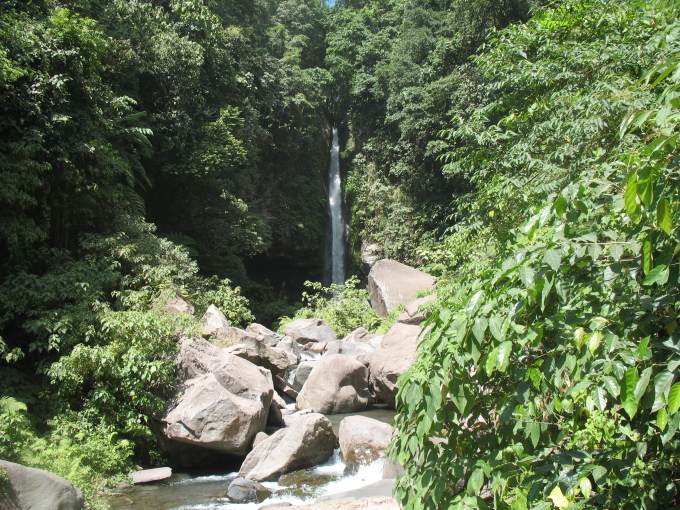
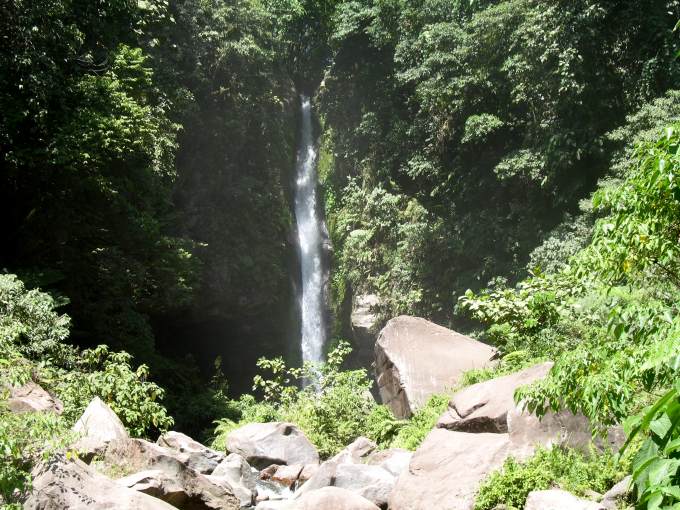
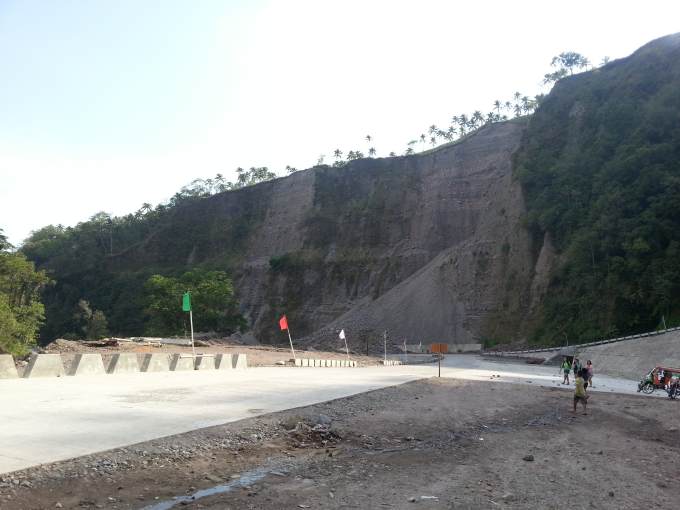
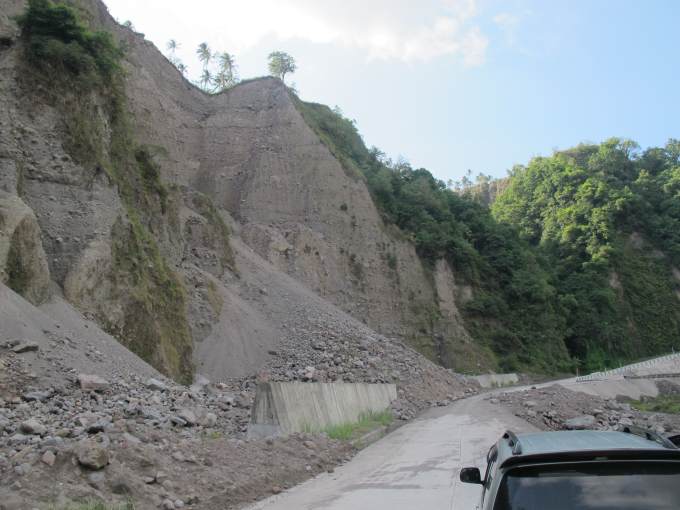
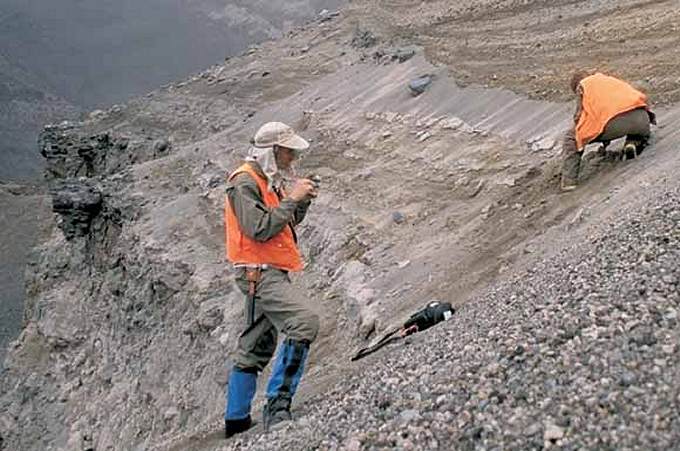
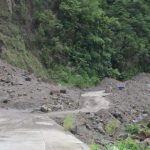
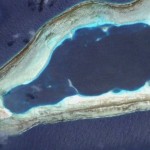
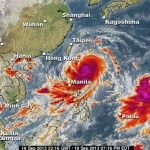




My Dutch bf and I visited Tuasan Falls last year. We were so furious upon discovering the destroyed mountains and the waterfalls itself. He took a lot of photos as the place at the time was under construction. ([Ed.]:Part removed because it contains a political statement. Silent Gardens isn’t political).
It is sad to know what is happening in the Paradise Island of Camiguin right now. I do hope and pray that the current government realized that true progress is based on the livelihood and living condition of it´s citizens and not based on cementing the whole island of Camiguin, hehehe.
They are not stupid. They knew about the landslides but road projects are way better than improving dilapidated school buildings. Silly question: what makes more?
We walked from Tuasan to Itum (and then all the way down to Saai) the other day and they haven’t thought a out this road anyway. Apart from landslides along the whole way this road is way, WAY too steep to accommodate anything else than aircon vans and motorbikes. Trucks, tricycles, jeepneys and probably even multicabs will not be able to climb this road.
The last kilometer or so, which is still undone, funnels into a very narrow path along side the mountain. If they want to make the road up there as wide as the rest, they will have to explode parts of the mountain, which will create a super unstable wall which will also most likely cause landslide after landslide.
It seems that they really haven’t properly thought of this…?
I just quote this from one of the big channels in TV and it says” Nature does not need us. We need nature.
If they are harming the nature in Camiguin, the worst is still to come.
It’s too late now. What is done cannot be undone. This is the legacy we will remember from the present administration who have been there for over a quarter of a century.
So sad!
Tinkering with nature is okay as long as it is done right with preservation in mind and will be of help to the people, economically. But for a lousily done jobs that can only further entail
It is very sad, to see this unfortunate Change of the paradise camiguin!
You know what bothers me is that the island is sitting on a magma that is still active. The last eruption during the late 40’s claimed so many lives. I remember my mom’s recollection on that event. She said it was chaotic. The local government enforced a forced evacuation to all affected residents. The locals were ferried on a barge to the nearby mainland Mindanao. She said they only took a few belongings on their escape from the island. I can’t imagine how that plays out in the future. With a booming population and infrastructure and lots of people lured on the island, it is beyond imagination how that escape could be done in just matter of hours and hours. This is to me is a sad reality check because at the end of the day, history still bounds to repeat itself and that would be scary.
Thank you very much for your feedback. I am living about 8 kilometers in direct line northwest of the volcano’s crater.
The eruptions of Hibok-Hibok from 1948 to 1953 had been a catastrophe.
But it had been another time just after WW2.
The volcano hadn’t been monitored as it is today.
Infrastructure on the island did not exist.
People could not interpret the visible signs and tremor.
Today Phivolcs monitors the volcanoes permanently with modern equipment.
Infrastructure and knowledge allow a much better evacuation in case that Hibok-Hibok erupts again.
But new errors are being made!
The road over the mountains is a real catastrophe.
This road had and many other roads on our island have been and still are being built without knowledge of geology.
Just two days ago I went up to the mountains. The recent investments into concrete are obsolete. The hills are sliding and rolling down
even faster than I had predicted.
To resume:
The volcanoes are monitored and I believe in the abilities of Phivolcs to warn us early enough.
The south of the island is rather safe. From there a controlled evacuation is rather probable.
But none of the slopes should be sacrificed anymore to sell concrete and widen roads that are not needed.
Cheers, waebi